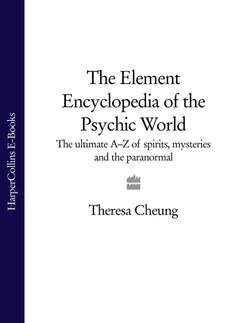Читать книгу The Element Encyclopedia of the Psychic World: The Ultimate A–Z of Spirits, Mysteries and the Paranormal - Theresa Cheung, Theresa Cheung - Страница 123
BONES, READING
ОглавлениеAn ancient Chinese method of divination that used bones from the shoulders of oxen, sheep, deer or pigs, or the shells of turtles, to predict the future. A petitioner would approach a diviner with a question that could usually be answered by yes or no. The diviner would write the petitioner’s question on a bone or a turtle shell from a sacrifice, and would then heat the bone by inserting into it a hot bronze poker. The heat would cause the bone to crack. The patterns of the resulting cracks were then interpreted according to mystical techniques, providing an answer to the petitioner’s question. Answers and results were recorded after the divination had been completed.
Rulers seem to have consulted the oracle bone diviners on even the most trivial aspects of life. Questions were asked about auspicious days for sacrifice and ancestor worship, births, illness, marriage, weather, agriculture, hunting, court appointments, government policy and warfare. A sample divination record reads:
On day 49 the king, making cracks, divined: ‘Hunting at Chi, going and coming will there be disaster?’ The king, reading the cracks, said, ‘Extremely auspicious.’ At this point we drove off in our chariots. We caught 41 foxes and 8 hornless deer.
The first oracle bones known to modern researchers were discovered by late-nineteenth-century Chinese peasants digging in their fields, and since then nearly 155,000 oracular inscriptions have been recovered. Most date to the period of the Shang Dynasty in the twelfth and eleventh centuries BC, or, in other words, to shortly after the time of Moses, and they are an invaluable source of historical insight. Although the use of oracle bones eventually died out, divination continued to play an important role in Chinese life. By the ninth century BC, bones were replaced by divination through the oracular book known as the I Ching, which continues to be used in China today, and around the world.
